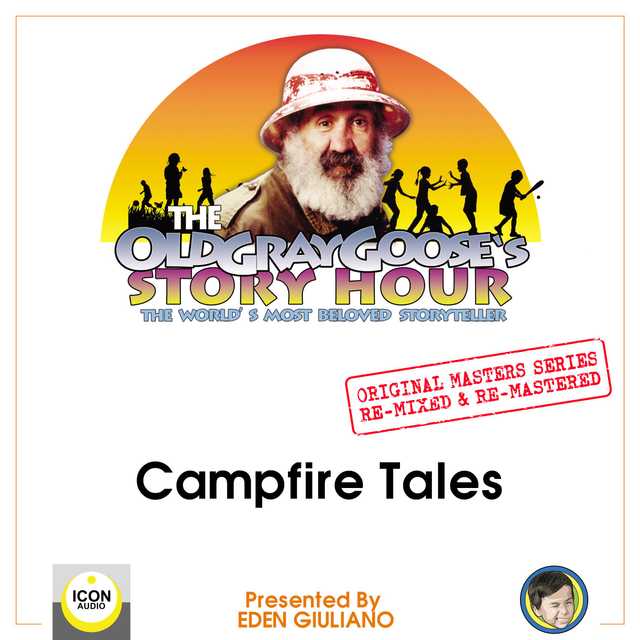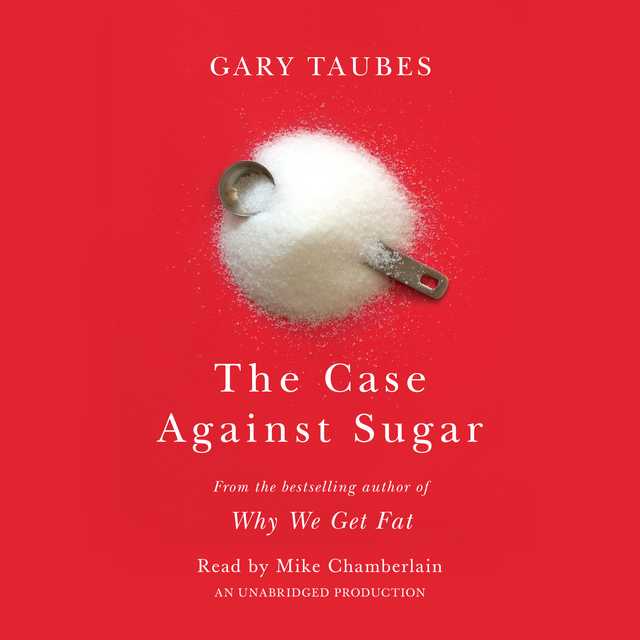That’s What She Said Audiobook Summary
Going beyond the message of Lean In and The Confidence Code, Gannett’s Chief Content Officer contends that to achieve parity in the office, women don’t have to change–men do–and in this inclusive and realistic audio handbook, offers solutions to help professionals solve gender gap issues and achieve parity at work.
Companies with more women in senior leadership perform better by virtually every financial measure, and women employees help boost creativity and can temper risky behavior–such as the financial gambles behind the 2008 economic collapse. Yet in the United States, ninety-five percent of Fortune 500 chief executives are men, and women hold only seventeen percent of seats on corporate boards. More men are reaching across the gender divide, genuinely trying to reinvent the culture and transform the way we work together. Despite these good intentions, fumbles, missteps, frustration, and misunderstanding continue to inflict real and lasting damage on women’s careers.
What can the Enron scandal teach us about the way men and women communicate professionally? How does brain circuitry help explain men’s fear of women’s emotions at work? Why did Kimberly Clark blindly have an all-male team of executives in charge of their Kotex tampon line? In That’s What She Said, veteran media executive Joanne Lipman raises these intriguing questions and more to find workable solutions that individual managers, organizations, and policy makers can employ to make work more equitable and rewarding for all professionals.
Filled with illuminating anecdotes, data from the most recent relevant studies, and stories from Lipman’s own journey to the top of a male-dominated industry, That’s What She Said is about success that persuasively shows why empowering women as true equals is an essential goal for us all–and offers a roadmap for getting there.
Other Top Audiobooks
That’s What She Said Audiobook Narrator
Caroline Slaughter is the narrator of That’s What She Said audiobook that was written by Joanne Lipman
Joanne Lipman is the Editor in Chief of the USA TODAY Network. She began her career at the Wall Street Journal, where she was the first woman to become Deputy Managing Editor and supervised coverage that won three Pulitzer Prizes. She was also the founding editor-in-chief of Conde Nast Portfolio magazine and portfolio.com. She lives in New York City.
About the Author(s) of That’s What She Said
Joanne Lipman is the author of That’s What She Said
More From the Same
- Author : Joanne Lipman
- Strings Attached
- Next!
- Publisher : HarperAudio
- Abraham
- American Gods [TV Tie-In]
- Dead Ringer
- House of Sand and Fog
- Prey
That’s What She Said Full Details
| Narrator | Caroline Slaughter |
| Length | 8 hours 28 minutes |
| Author | Joanne Lipman |
| Category | |
| Publisher | HarperAudio |
| Release date | January 30, 2018 |
| ISBN | 9780062802354 |
Subjects
The publisher of the That’s What She Said is HarperAudio. includes the following subjects: The BISAC Subject Code is Business & Economics, Workplace Culture
Additional info
The publisher of the That’s What She Said is HarperAudio. The imprint is HarperAudio. It is supplied by HarperAudio. The ISBN-13 is 9780062802354.
Global Availability
This book is only available in the United States.
Goodreads Reviews
Brad
February 28, 2018
Wish there were more clear cut solutions. This is a great read and I’d encourage everyone, but particularly fellow males, to read it deeply and become an ally.
Seb
June 17, 2018
"I'm glad we've begun to raise our daughters more like our sons, but it will never work until we raise our sons more like our daughters." ~ Gloria SteinemI wouldn't recommend as much as implore you to read this book. Part of solving any problem starts with awareness, even those as staggering as continuing gender inequality. Considering society's male-centric structures and widespread unconscious biases, significant progress still must be made. Lipman has created a brilliant piece of work supported by a balance of anecdotal stories, personal examples, empirical evidence, the experiences of others, and deep research. While eye-opening and a reminder of the major changes that still need to take place, "That's What She Said" is filled with optimism for the future and guidance on how we move forward together to raise women up so we are all equal. Change won't come all at once, but Lipman shares initial things we can do to make sure we head in the right direction. Men need to do more, we need to be better advocates. We need to be part of the conversation and more comfortable speaking about gender. I can do more, I will do more, and I invite all of us to reach across the gender divide. After all, it's not a women's issue, it's a human issue.
Brian
August 06, 2018
(4.0) Worth a lot more people reading and discussing.There's a lot of statement of the problem in this book, and I was a little worried that she wouldn't eventually get to the chapter on what to do about it. She's got a lot of things that we can do as individuals to help women in their careers. Kind of the other side of Lean In if you will. A lot of them are what we should already be working on: stopping interruptions, attributing ideas to the original speaker, encouraging more equal participation in meetings/discussions, taking parental leave (and companies making it equal for mothers and non-mothers).The area I hadn't thought nearly as much about is bringing women back into the workforce after working in the home for a number of years...particularly by helping them change careers or build new skills. There's a huge pool of intelligent women who could be great engineers and problem-solvers that we're missing out on....I know there are programs working to help this group of women, but I'm guessing they need a lot of help--if only to scale to help more women!
Hestia
December 16, 2022
"Bosnya cewek atau cowok?"--pernah nggak mencuri dengar pertanyaan serupa?Selama membaca That's What She Said, aku jadi mengoreksi diri apakah pernah melontarkan pernyataan seksis dalam ruang kerja/profesional. Pasalnya, bos atau pemimpin perempuan kerap dilabeli sebagai sosok yang "bossy", "galak", "tegas", "nggak kompeten mimpin." Label negatif yang ternyata kalau dirunut lagi...disampaikan oleh laki-laki.Joanne Lipman membuka buku dengan mengatakan bahwa perempuan nggak bisa jadi perempuan untuk diterima oleh koleganya. Juga nggak bisa jadi "laki-laki" karena akan memunculkan narasi negatif. Namun perempuan terus mencoba agar masuk ke dalam lingkungan profesional yang standarnya dibuat oleh laki-laki. Women are being outcast, the outliers.Dalam 10 bab, Lipman menilik ulang bagaimana bias gender merugikan keduabelah pihak. Baik laki-laki & perempuan sama-sama nggak dapat keuntungan kalau timnya isinya cuma dari satu gender tertentu. Lipman lebih banyak "menegus" secara halus tentang tingkah laki-laki yang mendiskreditkan perempuan. Seperti, motong presentasi perempuan & nggak membiarkan dia menyelesaikan kalimatnya.Selain itu, akibat dari patriarki yang mensubordinasi perempuan ialah bagaimana perempuan nggak berani buat give themselves the credit, sering ngerasa nggak capable buat jabatan tertentu. Beda banget dibanding laki-laki yang over pede 🤭That's What She Said bikin aku berpikir lagi how I see my workplace. Sudahkah lensa gender digunakan untuk kebaikan bersama atau didismissed gitu aja karena "loh kan perempuan udah dapet ini itu"? Aku suka sekali dengan kemasan buku ini. Ringan & blak-blakan. Nggak pake marah-marah tapi pembaca bisa dapat poin Lipman "Kenapa sih harus bahas persoalan ini?"That's What She Said nggak cuma kudu dibaca mereka yg udah ada di bursa kerja, melainkan juga penting buat yg baru mau masuk dunia "nyata." Supaya nggak bisa dibodohi/diabaikan/diperalat sama seniornya hehe 😝 IYKYK
Paula
August 26, 2018
I am that one person who didn’t really love the book “Lean In”, so I thought I might feel the same, here. However, this book was much better for me. I agree that there is still a long way to go for all of us, but I like that this book doesn’t look for places to place the blame. Men aren’t the enemy and women don’t have to change...we need to work together to evolve some very hard-wired perceptions. We all need to challenge ourselves to open our minds, a bit, to how we value certain traits and styles and skills. I plan to put this on my calendar to reread, or at least revisit my highlighted sections, at least once every six months.
Nadine
April 17, 2018
Probably more useful than “lean in” but still errs somewhat on the depressing details chapter after chapter on just how tough the realty for any woman daring to leave the home for the work place. A few good tips and interesting success stories of companies / business schools making a difference. Yes definitely women won’t make a difference on their own, they need male allies, supporters and sponsors.
Alexandra
March 02, 2018
great. everybody read. I found the advice valuable and not vilifying or preachy.
Marks54
June 02, 2021
This is a 2018 book by Joanne Lipman, who is a journalist/editor with experience at a number of large publications. The book addresses issues of gender in the workplace and the broader economy, including issues such as equal pay, work life-family balance, sexual harassment and other issues about realizing the promise of women entering the professional workplace on equal terms with men. The book fits into a broader category of books on diversity training that have taken on such importance recently as a result of the Black Lives Matter movement, the growing prominence of Critical Race Theory/Research, and the broader impact of COVID-19 on the world economy.The premise of the book is that more traditional approaches to gender related sensitivity training are wrong and misguided due to an excessive focus on treating men as the conscious enemies to women in the work place and a presumption that focusing on a simplistic interpretation of the normative and ethical issues involved in how women are treated will lead to the best training results. Lip man takes issue with this arguing that this emphasis is unreasonable and also ineffective because it alienates the large numbers of men who are supportive of working with women on these issues but concerned about being made the villains rather than potential partners for improvements.Gender problems in the workplace, while not immune from bad behaviors, are also strongly influenced by systemic prejudices, longstanding and poorly understood norms, decades of socialization, and other factors. Lipman’s point is that its complicated and there are lots of men and women who want very much to improve the situation. Doing so will not just be more normatively justifiable and ethically sound but will also lead to greater involvement of capable people in work, more effective jobs, groups, and organizations, and ultimately a more productive society. Failing to recognize will lead to the perpetuation of gender issues and to ineffective but costly training and organizational change efforts.This is a well written and thoughtful book that covers a good range of important issues. Lipman is translating a large amount of information into an engaging, clear, and consistent story that should ring true with thoughtful people considering these issues in professional life in 21st century America.These sorts of trade books are frequently missable, especially when they are assigned reading in some required diversity class. This book is an exception and well worth reading even when one is not required to attend a training program.
Diane Hidey
September 10, 2020
This is a must read for woman who can’t understand why they get overlooked in the work place. It’s a must read for men who wonder why woman aren’t doing better in a male dominated work place. Lots of learning still needs to be done. Lipman intersperses personal stories, vignettes and good psychological reasons for the differences in how to lead women and ways for women to rise up in the workforce.
Katie
November 04, 2018
Highly recommend this book! Gender equality isn’t scary, complicated, or out to shame men. We just need to re-think how we look at and treat each other. Joanne Lipman shares lessons learned through interesting anecdotes from all sorts of workplaces and cultures, which makes her message relatable and clear. I urge everyone to read this book, whether you are a fisherman or a financier, regardless of your gender.
Douglas Ulrich
June 30, 2018
I picked this booked up originally because in my day-to-day I don’t work with many women and I wanted a refresher on the differences in communications styles so that any interactions I do have will be that much more productive for all involved. I have found this book to be a great eye-opener for the current status of male/female equality in the workplace. Especially in my field, where there is a definite overload on the side of male input, this books makes me yearn for more women to work with for the difference of input they would bring. I will work to avoid interrupting women in conversations and speak up for them when they are interrupted. I will work on actively seeking their inputs and offer them opportunities they may not feel they are ready for yet. I will work to be the vocal proponent of the value women uniquely bring to the table. I recommend this book to everyone, but most especially to men. It is our unique role as men, for whom the business world has been traditionally built for, to help promote this equality. If not for the sake of equality itself, but for the businesses we work in to make them more informed and profitable. To help ourselves gain paid family leave, flexible work schedules, affordable child care, and just a good work-life balance. To help end the cycles of previous salary dictating the next salary. To help keep our companies from crashing in spectacular fashion because of over-hyped bravado leading the helm.
Andrea
June 26, 2018
If you are a working woman, many of the examples in this book will sound familiar. Even if you haven't experienced them, you likely know someone who has.I liked the emphasis that gender equality will only happen if we all work together, however it's still frustrating to know that getting everyone on board is work in and of itself.The biggest take away I got from this read was to advocate for myself as I would for a female co-worker. But there are other concrete ideas too-- shut down interrupting altogether, acknowledge your own biases and disrupt them, let the employee decide (ie, don't assume a woman won't take a promotion because she has young kids at home-- ask her and let her decide).This book serves as part of the piece of communication that needs to be happening in all companies. For some it's preaching to the choir, but for some it will be enlightening.
Leigh
March 01, 2021
Almost nothing but well-documented, cited facts. If you find yourself become offended or defensive, consider that something you need to work on, or even to change in order to improve yourself and how you contribute to (or detract from) the workplace environment.I do have one skepticism about something Lipman briefly discussed: that the biological differences of men and women hardwire individualism in men and collaboration in women. Those are learned, ingrained behaviors, particularly in that girls are punished for exhibiting leadership qualities. Boys are not taught to empathize or caretake the way girls are groomed to do. So the fact that men are hormonally threatened by women's tears is more likely a psychosomatic response brought on by an inability to recognize and understand women's feelings. If women are taught to recognize the feelings of both men and women, men can be taught to recognize feelings of both men and women. Women's tears aren't activating "caveman" DNA, as one study cited here theorizes.From here we move to MRI imagery of a male vs female brain, which suggests female brains have much more wiring, so to speak. More neural pathways and interbrain communication. This is conducive to multitasking, but you don't have to multitask to empathize with others. Lipman seems to suggest with this very brief discussion that the difference in wiring accounts for gendered differences in perceiving one another, but I'm not convinced. This is highly reminiscent of biological determinism and "boys will be boys" mentality. Certainly there appear to be differences in wiring, as in how information is transferred and interpreted throughout the brain, but what exactly do those differences mean, and how are those differences developed? Are these differences perceivable in children? What information is transferred/processed at these points or intersections? Etc. There's a paucity of information regarding that here.Other than that, I really enjoyed this book.
Lee
April 27, 2019
VERY Good, But....It’s the best Diversity / Gap book I’ve read to date. It appropriately acknowledges the failure of previous attempts that have made things worse. It also offers suggestions that work quite well such as simply telling someone “Hey, that’s not cool.” However, it ignores other competing data such as those presented in “Why Men Earn More.” In fact, her data has some of the exact faults presented in that book, nor does it respond to meta analysis studies (by female economists) that provide data indicating the wage gap is not as severe as most media report. Although she opens by claiming it’s not a book on man shaming, to a moderate degree it is. Meanwhile, some of her solutions aren’t fully explored. “Government subsidized” sounds great to the consumer, but overlooks that consumers could better afford many things if citizens were taxed less. Perhaps the decision set of affordability (for both parents) should include things like: less debt, smaller homes, older cars, no cable, and eating at home. (But, her comparison between childcare and tuition is indeed profound.). Also, remember that wage increases for workers will increase the cost of living for consumers, which includes childcare. I do not advocate keeping wages low. Rather, that the book lacks macro level economic studies. Instead it often compares the US against countries that are not particularly comparable. It shares the #1 problem of many business books. It’s a 200+ page book that’s 300+ pages. Many chapters go on and on and on, ignoring the natural stopping point that is already present. Cut back on defending the chapter with more studies that belabor the point and instead answer questions of competing viewpoints. Even so, it’s still the best “ism” book I’ve read in a long time and have recommended to many people.
Alessandra
October 08, 2018
I've been spending the last several months reading about gender inequality, what women and men can do to bridge the gap, and where these issues stem from. No book is perfect, and what I have found is that often in the negative reviews there is criticism that the author should have could have gone deeper on a topic that the specific reader saw as more significant. I also constantly see a dismissal of the author via comments that said write must be, is or has been privileged, and thus cannot possibly write well on the topic.I find it sad that in reviewing these works, readers are too often looking for what's missing before considering how a book serves a purpose or provides value to it's readers.With that said, Joanne Lipman's book is a great review of the research and findings on gender inequality, it's roots, and the many factors that promote and maintain it, even when men and women say they want to act against it. I did find a common thread throughout this book, which is that our chances of success in overcoming this gap will be greatly facilitated and accelerated if/when men become more comfortable talking about the issue and act as supporters and champions in forwarding this cause. This is not about pinning the problem on men, as our unconscious biases make all of us susceptible to acting against women and maintaining the existing bias.Before Lean In, before Womenomics or Nice Girls Don't Get the Corner Office, I'd recommend women interested in bridging the gender gap at work and at home read That's What She Said.
Annalisa
December 31, 2019
This feminist work is very gentle towards men and is optimal for gifting to men with sensitive feelings about being called out for their sexist behavior. In all seriousness, this book is statistics heavy while also being very accessible, and I recommend it to anyone who hasn't read much feminist theory or isn't convinced that sexism still exists, or anyone who would like statistics to back up what they already know. It focuses heavily on bringing men into the discussion and and fight for equality, which of course includes being somewhat gentle and focusing on unconscious bias rather than purposeful degradation, but in turn it brings a number of strategies to the table that have started to be used to work towards equality. These strategies are discussed and it is shown how well they are working, while suggesting that the useful ones get used by more men in the wider world, as most of the strategies are only in place now in certain companies, colleges, or countries (Iceland is discussed in detail). I found the statistics and references to numerous scientific studies as well as data collected from various companies on their employees to be very helpful. The flow from what topic to another was also very smooth. A few times the author repeated herself a few chapters apart, going back and re-proving a point she had already made in an aside, but it wasn't too irritating and she got back to her new point fairly quickly.
Most Popular Audiobooks
Frequently asked questions
Listening to audiobooks not only easy, it is also very convenient. You can listen to audiobooks on almost every device. From your laptop to your smart phone or even a smart speaker like Apple HomePod or even Alexa. Here’s how you can get started listening to audiobooks.
- 1. Download your favorite audiobook app such as Speechify.
- 2. Sign up for an account.
- 3. Browse the library for the best audiobooks and select the first one for free
- 4. Download the audiobook file to your device
- 5. Open the Speechify audiobook app and select the audiobook you want to listen to.
- 6. Adjust the playback speed and other settings to your preference.
- 7. Press play and enjoy!
While you can listen to the bestsellers on almost any device, and preferences may vary, generally smart phones are offer the most convenience factor. You could be working out, grocery shopping, or even watching your dog in the dog park on a Saturday morning.
However, most audiobook apps work across multiple devices so you can pick up that riveting new Stephen King book you started at the dog park, back on your laptop when you get back home.
Speechify is one of the best apps for audiobooks. The pricing structure is the most competitive in the market and the app is easy to use. It features the best sellers and award winning authors. Listen to your favorite books or discover new ones and listen to real voice actors read to you. Getting started is easy, the first book is free.
Research showcasing the brain health benefits of reading on a regular basis is wide-ranging and undeniable. However, research comparing the benefits of reading vs listening is much more sparse. According to professor of psychology and author Dr. Kristen Willeumier, though, there is good reason to believe that the reading experience provided by audiobooks offers many of the same brain benefits as reading a physical book.
Audiobooks are recordings of books that are read aloud by a professional voice actor. The recordings are typically available for purchase and download in digital formats such as MP3, WMA, or AAC. They can also be streamed from online services like Speechify, Audible, AppleBooks, or Spotify.
You simply download the app onto your smart phone, create your account, and in Speechify, you can choose your first book, from our vast library of best-sellers and classics, to read for free.
Audiobooks, like real books can add up over time. Here’s where you can listen to audiobooks for free. Speechify let’s you read your first best seller for free. Apart from that, we have a vast selection of free audiobooks that you can enjoy. Get the same rich experience no matter if the book was free or not.
It depends. Yes, there are free audiobooks and paid audiobooks. Speechify offers a blend of both!
It varies. The easiest way depends on a few things. The app and service you use, which device, and platform. Speechify is the easiest way to listen to audiobooks. Downloading the app is quick. It is not a large app and does not eat up space on your iPhone or Android device.
Listening to audiobooks on your smart phone, with Speechify, is the easiest way to listen to audiobooks.






























